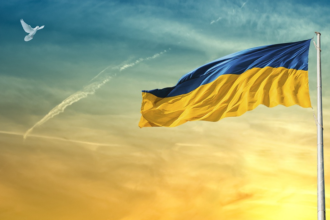Zelensky Signals Moscow Must "Feel" the Consequences of its Invasion
Three days into a significant cross-border attack by Ukrainian forces on Russia’s Kursk territory, Ukraine’s leadership sent a clear warning to Moscow: Russia has to “feel” the results of its invasion of Ukraine. “Russia brought the war to our land and should feel what it has done,” stated a Thursday night speaker. The message was clear—Ukraine is determined to make Russia pay for its actions—even though the sentence fell short of explicitly acknowledging the continuing onslaught.
- Zelensky Signals Moscow Must "Feel" the Consequences of its Invasion
- Largest Assault on Russian Soil
- IAEA Monitors Kursk Nuclear Plant
- Ukrainian Forces Gain Ground
- Civilians Evacuated Amid Attacks
- Evacuation Orders in Neighboring Regions
- Strategic Objectives or Symbolic Strikes?
- Broader Context and Future Implications
Largest Assault on Russian Soil
Russia said on Tuesday morning that over 1,000 Ukrainian forces, supported by tanks and armoured vehicles, had infiltrated its territory in what seems to be one of the most significant assaults on Russian land since the war started. As the situation on the ground got more heated, Russia’s government swiftly charged Ukraine with organising a “major provocation.”
Ukrainian officials have been mostly quiet despite the scale of the attack. There are a few particular specifics on the operation, but both sides provide meagre information. However, the leadership made hints about Ukraine’s military might, saying, “Everyone can see that the Ukrainian army knows how to surprise [and] achieve results,” without explicitly addressing the continuing attack.
IAEA Monitors Kursk Nuclear Plant
The International Atomic Energy Agency (IAEA) said it monitored Kursk’s nuclear facility amid the turmoil in the country. Reflecting the growing global awareness of the possible hazards presented by the conflict, this information arrived via the state-owned Russian news outlet RIA-Novosti.
On Thursday, Russia’s military ministry said that its forces were “continuing to destroy” Ukrainian units with a barrage of aircraft, rockets, and artillery fire aggressively engaged. The government also attested to the quick deployment of Russian reserves to support the area.
Ukrainian Forces Gain Ground
The respected think tank The Institute for the Study of War offered a critical assessment of the circumstances, highlighting that Ukrainian armoured vehicles had moved up to 10 kilometres (6.2 miles) into the Kursk area during the first two days of the invasion. For Ukrainian troops, this was a significant territory acquisition that begged concerns about the integrity of Russian fortifications.
Domestically, Russia’s military leadership came under further examination. Several well-known pro-war Telegram groups, recognized for their typically accurate reporting, have challenged the Kremlin’s story by implying that the ground situation is significantly more unstable than officials are ready to acknowledge. Rybar, one powerful source, attacked the higher levels of the Russian military, saying, “For two months, the full information was sent to the useless headquarters,” and lamented the sufficient opportunity “to make an appropriate decision.”
Civilians Evacuated Amid Attacks
In a live video chat with Russia’s government, Kursk regional governor Alexei Smirnov discussed attempts to evacuate people from the fighting area. Residents were being moved to other Russian regions ready to welcome them using buses and trains. Ongoing Ukrainian bombardment, however, apparently hampered these initiatives. Smirnov’s Telegram account kept alerting locals of missile attacks all night and into Friday morning.
The Russian military ministry stated on Telegram that by Friday morning, it had intercepted and destroyed 75 UAV missiles across many areas, including Kursk. Russian official news sources meanwhile claimed a fire at a military airstrip in the nearby Lipetsk area. However, whether the event was connected to the Kursk battle was unknown. Lipetsk received a red threat level alert; however, later in the day, it was withdrawn. Regional governor Igor Artamonov said the power interruptions resulted from damage to an energy infrastructure facility.
Evacuation Orders in Neighboring Regions
Local officials in areas around Kursk, both in Russia and Ukraine, advised citizens to flee for their safety as the fighting got more intense. Wednesday, the president of Sumy, the Ukrainian region, ordered the evacuation of Kursk’s environs. The governor of Belgorod in Russia claimed that during the last 24 hours, Ukrainian troops had attacked towns all around his province.
The unexpected attack also took Ukraine’s prominent supporters off-balance. The United States acknowledged contacting Ukraine to clarify what it intended to get from this audacious action.
Strategic Objectives or Symbolic Strikes?
This latest attack into Russian territory is not unusual. Though they were finally turned back, anti-Kremlin Russian organisations operating in Ukraine conducted similar incursions last year. Once more crossing into the Belgorod and Kursk areas, these troops clashed with Russian security forces earlier this March.
On Wednesday night, it was stated that the Ukrainian army had taken over the Sudzha gas terminal, an essential point for natural gas transportation from Russia to the EU via Ukraine. Gas was flowing from Sudzha as of Thursday despite the continuous strife. This hub is strategically the single point of access for Russian gas into the EU.
Reacting to the increased tensions, Russia’s National Guard strengthened security near Kursk’s nuclear power plant, about 70 kilometres northeast of Sudzha.
Broader Context and Future Implications
Russia has made some progress in eastern Ukraine over the last few months; Kyiv’s ground forces are constantly under attack in the Donbas area. Still, Ukraine’s current behaviour suggests a change in approach. In a recent interview, Ukraine’s head of defence intelligence said that “it is expected to be over in a month and a half to two months.”
The world community keeps a careful eye as the crisis develops, considering the ramifications of Ukraine’s audacious action and what it possibly portends for the course of the war.








